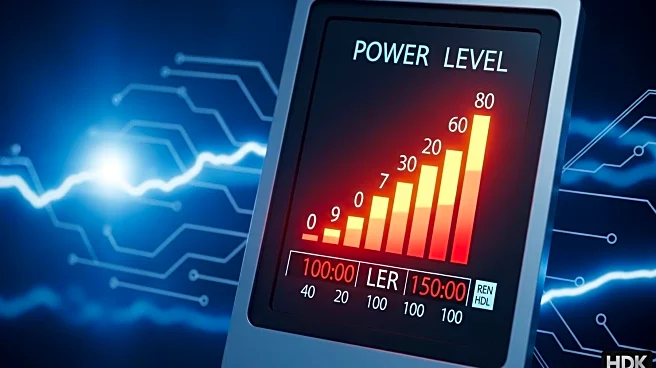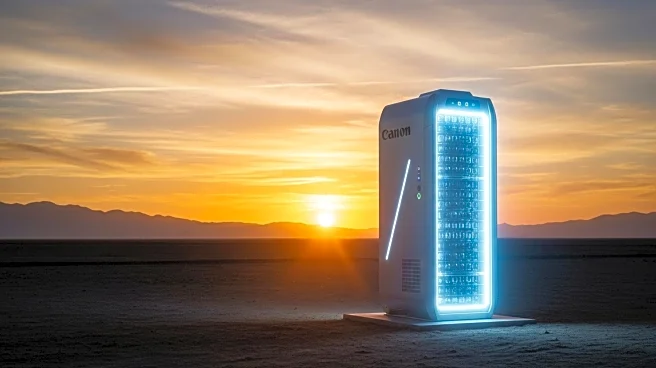What's Happening?
Residential electricity rates in the United States have increased by 6.6% over the past year, with significant hikes observed in Maine, the District of Columbia, and New Jersey, according to the U.S. Energy Information Administration. The rise in electricity rates is attributed to increased demand and supply constraints, exacerbated by soaring natural gas prices, which have risen by 22.6% at the Henry Hub. This increase in gas prices influences wholesale power prices, subsequently affecting consumer electricity bills. The Center for American Progress (CAP) reports that at least 102 gas and electric utilities have either raised or proposed higher rates, potentially increasing Americans' total electric bills by approximately $67 billion. The demand surge is partly driven by the expansion of artificial intelligence data centers, which require significant infrastructure investments, adding to the financial strain on utilities.
Why It's Important?
The increase in electricity rates has significant implications for U.S. households and industries, potentially leading to higher living costs and operational expenses. The rise in energy costs could disproportionately affect low-income families and small businesses, who may struggle to absorb the additional financial burden. Additionally, the growing demand for electricity, driven by technological advancements and extreme weather conditions, highlights the need for substantial investment in energy infrastructure. The situation also underscores the challenges of transitioning to renewable energy sources, as the loss of federal support for clean energy initiatives may further drive up costs. The public backlash against rising rates is mounting, with political leaders in states like Indiana and Arizona calling for regulatory intervention to mitigate the financial impact on consumers.
What's Next?
As electricity rates continue to rise, there is likely to be increased scrutiny of utility rate requests by regulators and policymakers. This could lead to more stringent evaluations of proposed rate hikes and potentially foster greater investment in renewable energy infrastructure to stabilize prices in the long term. The political pressure on elected officials to address affordability concerns may result in legislative or regulatory actions aimed at curbing future rate increases. Additionally, utilities may need to explore innovative solutions to balance the growing demand for electricity with the need to maintain affordable rates for consumers.
Beyond the Headlines
The rising electricity rates also raise ethical and environmental considerations, as the reliance on natural gas and the slow transition to renewable energy sources contribute to ongoing environmental challenges. The financial strain on consumers could lead to increased energy poverty, where households are unable to afford basic energy needs, prompting discussions on energy equity and access. Furthermore, the situation highlights the importance of diversifying energy sources and investing in sustainable infrastructure to ensure long-term energy security and environmental sustainability.













